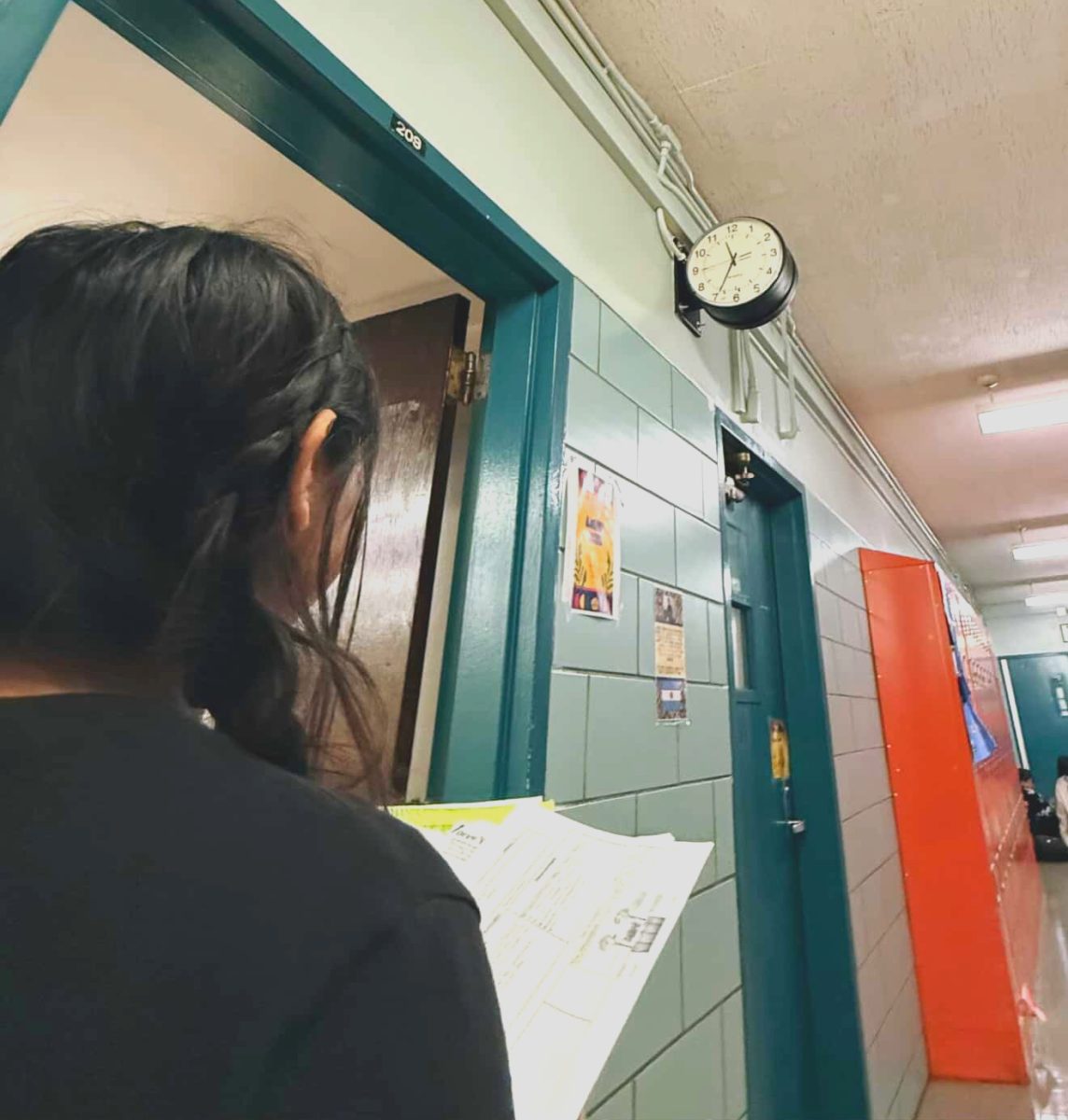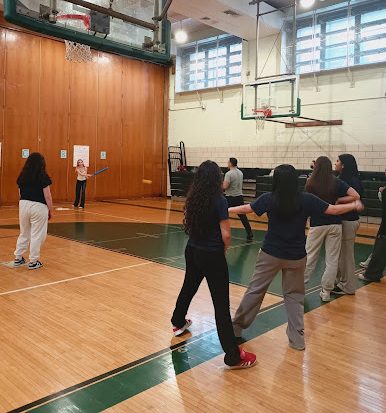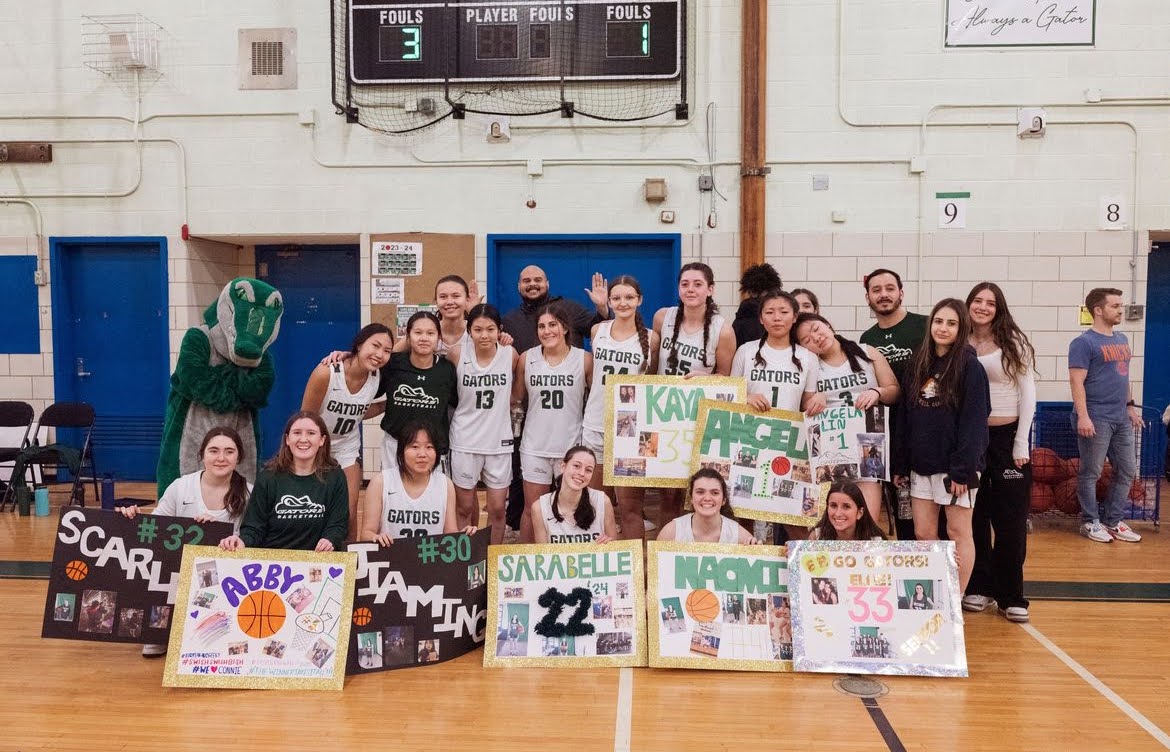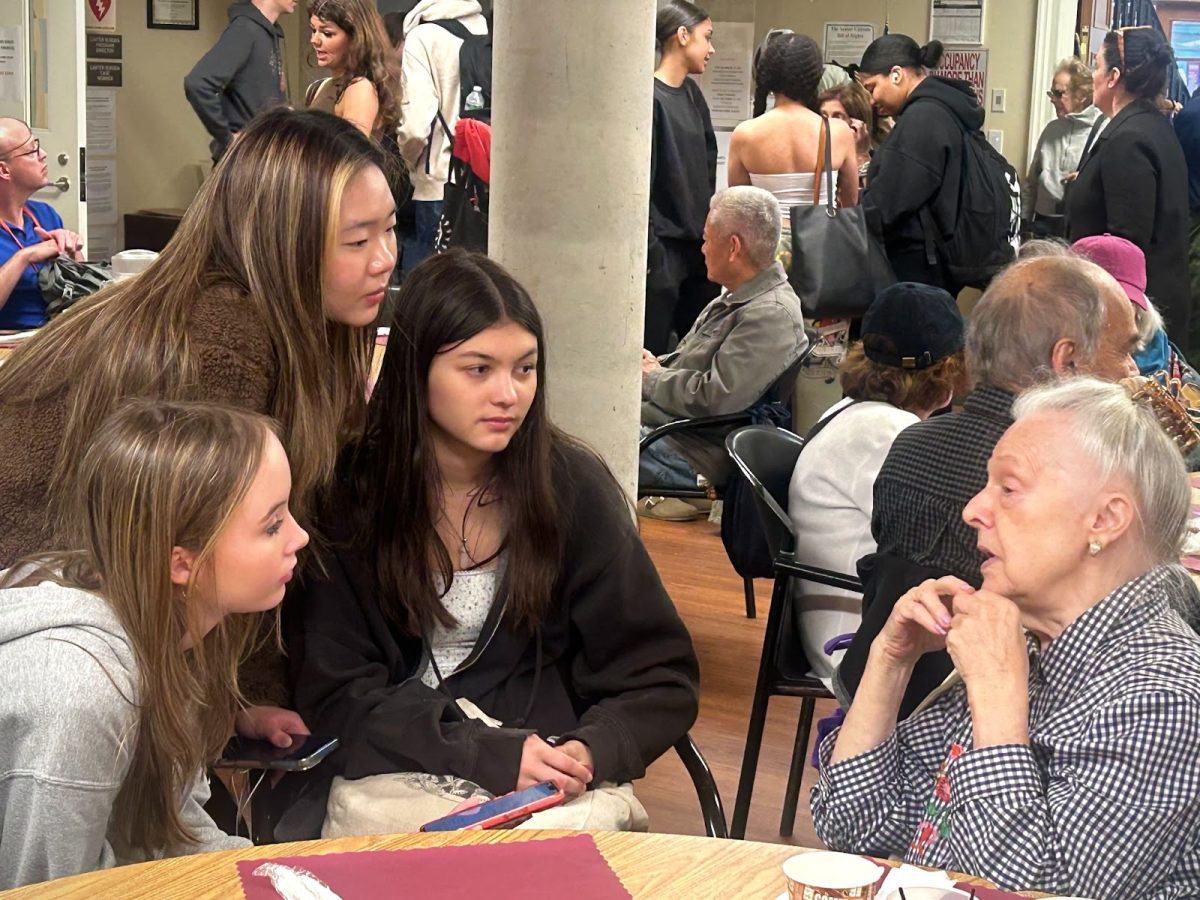Make Studying Your B****!
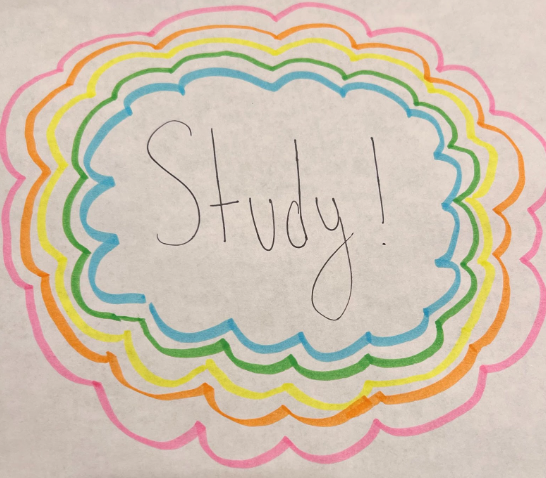
March 30, 2023
One of the worst things about school is the work. Especially the work we have to take home. No one actually likes studying, and if you do then you’re crazy! The problem with studying is that it seems like an essential task that we should do because it will help us. This idea of “should” deters us from actually wanting to do the work. We know that studying is essential, yet we are unable to shake the persisting dread that comes along with it. Why isn’t studying easy? Why isn’t it fun? Who said it shouldn’t be all those things? Most of the time, it all just comes down to the way you study.
Everyone has their own method of studying. Sometimes, people are able to find their medium and run with it. Kym Smith, a Senior at Museum said “…I rewrite out my notes… in an organized manner… And then just like, quizlets and flashcards.” And when asked if this worked for her, Smith confidently said “Completely, yes.” But not everyone finds total success with studying. When Freshman Zelia Zika was asked the same questions, she answered “mostly reviewing notes and looking at flashcards,” and “yeah, most of the time.” So, how can we turn that “most of the time” into “completely”?
The SQ3R Method
SQ3R focuses on reading and comprehension. It stands for Survey, Questioning, Read, Recite, and Review. With Surveying, you’ll want to take the text that you have to read and skim it, taking notes on anything that might stand out such as headings, subheadings, bolded words, images, graphs, etc.
Questioning entails formulating questions based off of the notes that you took while surveying. This would include “what do I already know”, “what day did ___ occur”, “what was ___”, “define ___”, or any other questions that could pertain to the topic.
The first of the three R’s, Reading, is as simple as that. Read the text at hand, making sure to take the time to answer the questions you’ve formulated in full sentences. The second of the three R’s, Recite, is summarizing what you’ve just read, trying to include as much details and information as possible. And the final R, Review, is simply reviewing the material that you’ve curated. This would be the questions and summary (recite). Having these structured notes will help you in the future when you need to reference the specific text or topics presented in the texts. It will serve as a hub for the important information on the topic.
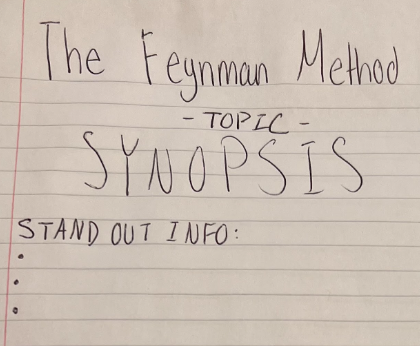 The Feynman Method
The Feynman Method
To put it simply, the Feynman Method is putting it simply. It’s like trying to explain the topic to a five-year-old (but you’re the five-year-old and you’re not five). If you want to take the easy way, what you’ll do is try to dumb down the information in your head and then use your own words to define or explain the topic.
What you should do if you’re feeling extra studious is write it down. Start by tilting the page with the topic you’re studying. Under the title you would write a synopsis explaining what the topic is about in terms that you can understand. Then if there’s any statistics or stand out information (like quotes, phrases, and specific words), either highlight it in the synopsis or bullet point it underneath. Then review what you’ve written.
The most important thing regarding the Feynman Method is that you need to be able to understand what you’re trying to explain. Don’t dumb down the words to a point where they don’t make sense, but don’t keep in words or phrases that you don’t understand just because it makes you sound smarter. Who cares about seeming smart? All that matters is that you understand what you’re learning!
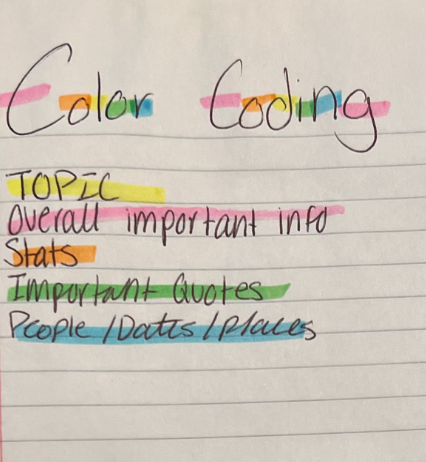 Color Coding
Color Coding
Who doesn’t love some color in their miserable little lives? Color coding not only makes your notes more aesthetically pleasing, but it helps with association, attention, and organization. Having your notes written in just pen or pencil isn’t fun. It’s boring, it’s ugly, dare I say fugly? And it really doesn’t do much for organization. How do you know when you’re moving onto a different topic? How do you know which bits of information really need to be emphasized? How do you find the sheer will to look at ugly notes?
Having bright, flashy colors on the page makes your notes more appealing to the brain. And a plethora of colors helps with associating the different elements of the topic. It also helps with locating specific information that you might need to reference later on. Color coding not only makes your notes more appealing, but it comes in handy when you need to quickly locate information. It’s one of the easier, low effort methods that’s also really effective and fun!
Rewards System
Everyone loves to be rewarded. Especially for doing the bare minimum. So why not reward yourself for doing something you might not be enjoying? What the Rewards System grants you is the motivation to push through and gives you something to look forward to while studying. When you set rewards for yourself after you study completely, you’re going to be more focused on getting it done as quickly as possible so you get the reward. However, if you reward yourself as you are going, you’re not going to be so fixated on the main prize which will help you with focusing.
For the Rewards System, you’ll set small goals while you’re studying. This could be finishing two pages of a textbook, finishing five questions, ect., then you get your reward. The reward could be something like a gummy worm or something small like that. A reward shouldn’t be something that will distract you and take your attention away from studying, so don’t reward yourself with a phone/screen break (unless you’re doing the Pomodoro Method).
Pomodoro Method
The Pomodoro Method is just the fancy alternative name for Interval Studying. This form of studying allows you to pace yourself and not get overwhelmed. To successfully complete the Pomodoro Method, you’ll need to start with a to-do list. This will help you keep your objectives in order and keep you organized on what you need to accomplish. Then you’ll set a timer and start your first interval. This could be for 30 minutes to an hour.
During the interval time, be sure to keep all distractions at bay so put your phone in a different room or anything else that might distract you. When the first interval is up you can take your first break. The breaks should be shorter than the intervals, about half the time you took to study. After the break, start your second interval and alternate between breaks and intervals until you’re done. The Pomodoro Method helps with pacing and breaks down studying so you don’t breakdown yourself.
Extra tips for studying
- Listen to music! This will make the experience way more enjoyable.
- Eat snacks.
- Study with a friend! This will help you if you don’t understand something or if you need to look at something from a different perspective. It’s also just more fun doing things with your friends.
- Use flashcards, they’re a quicker way of going over your notes.
- Try to use a pen and paper to write notes down.This allows you to better comprehend and retain information than when you type it out.
- Study in a quiet environment that doesn’t have many distractions.
Studying is scary, it’s a burden, and it’s boring. But you’re in control here! Turn the intimidating task into something that’s intimidated by you.











